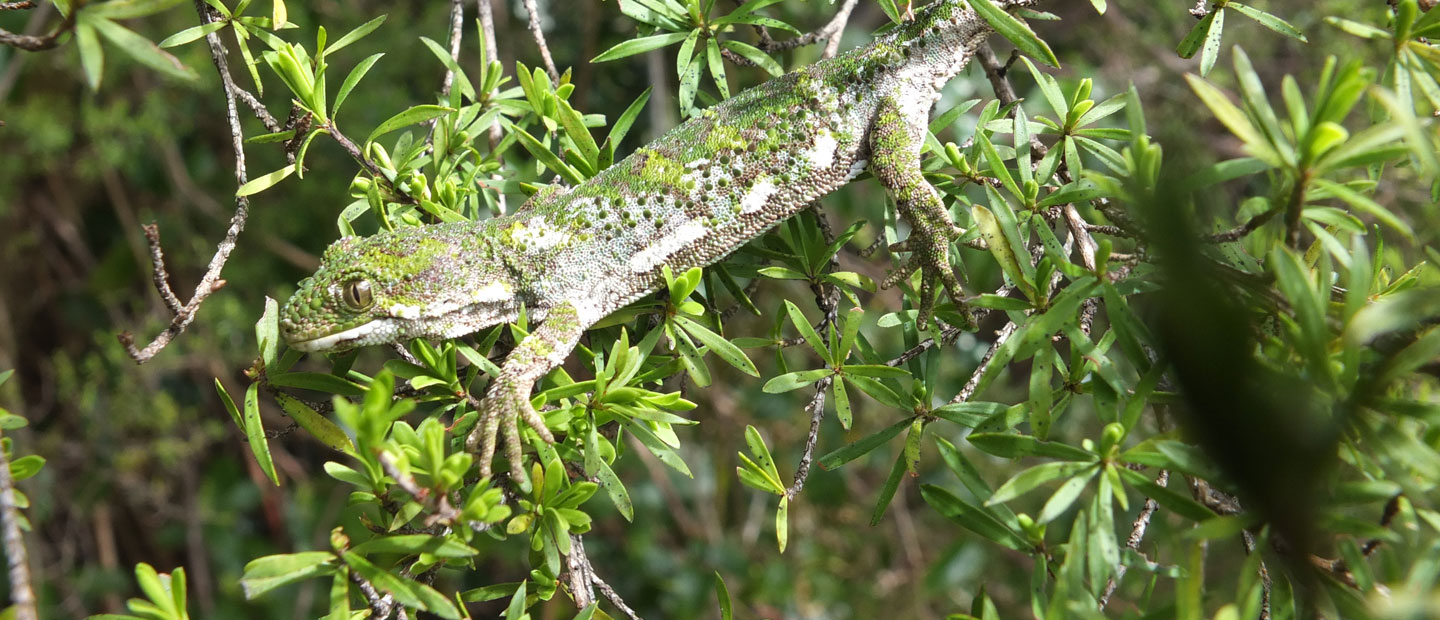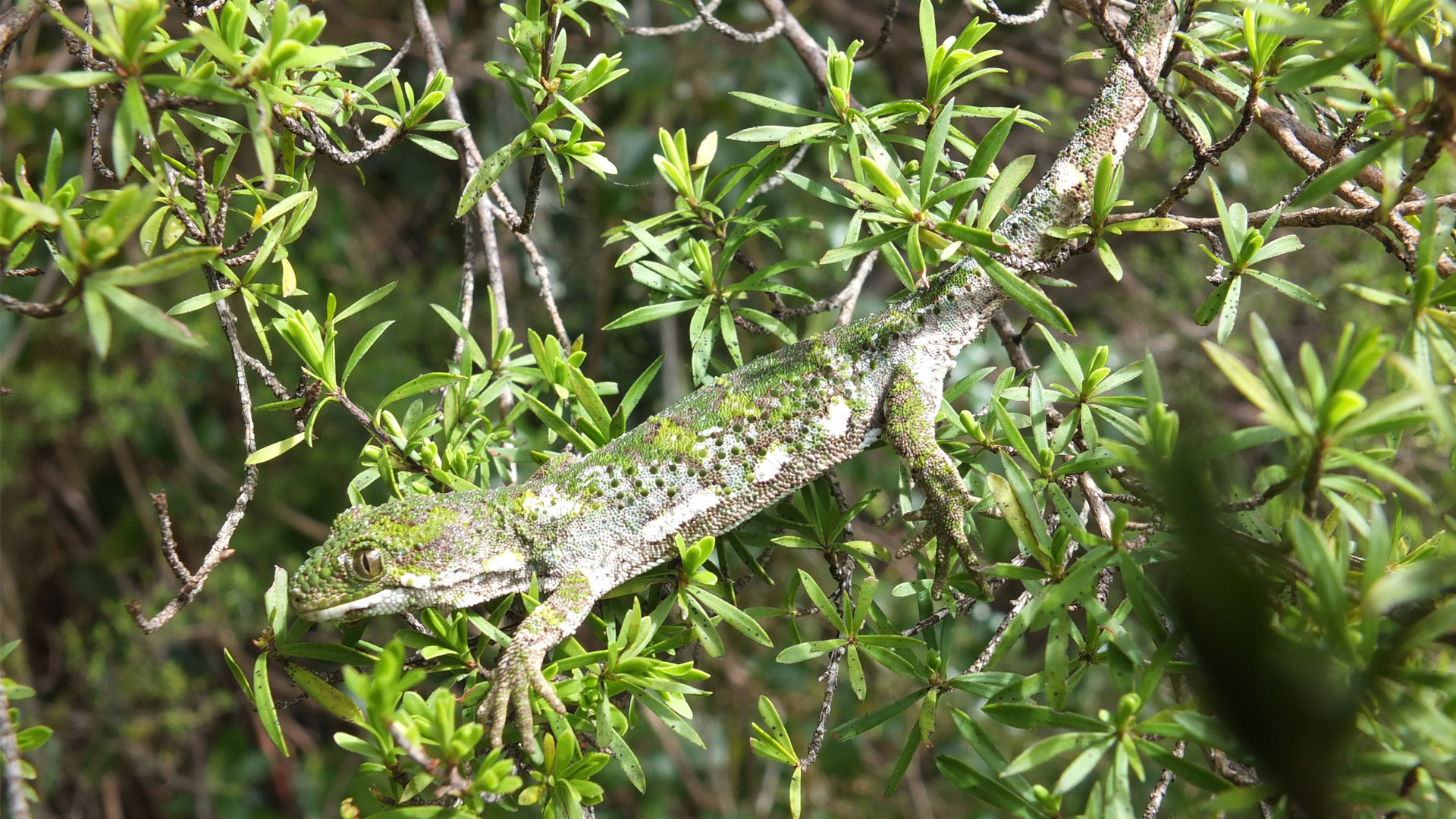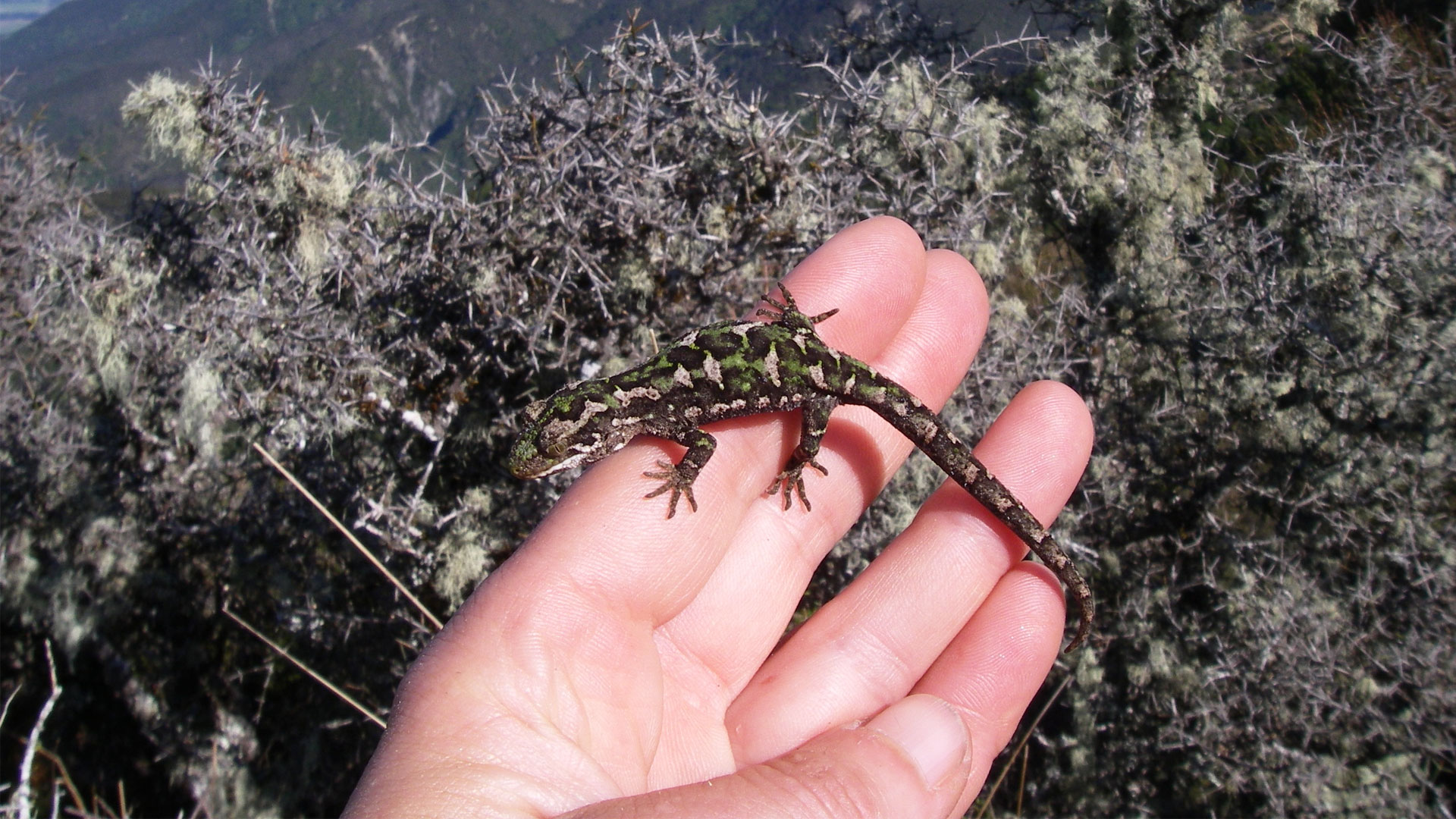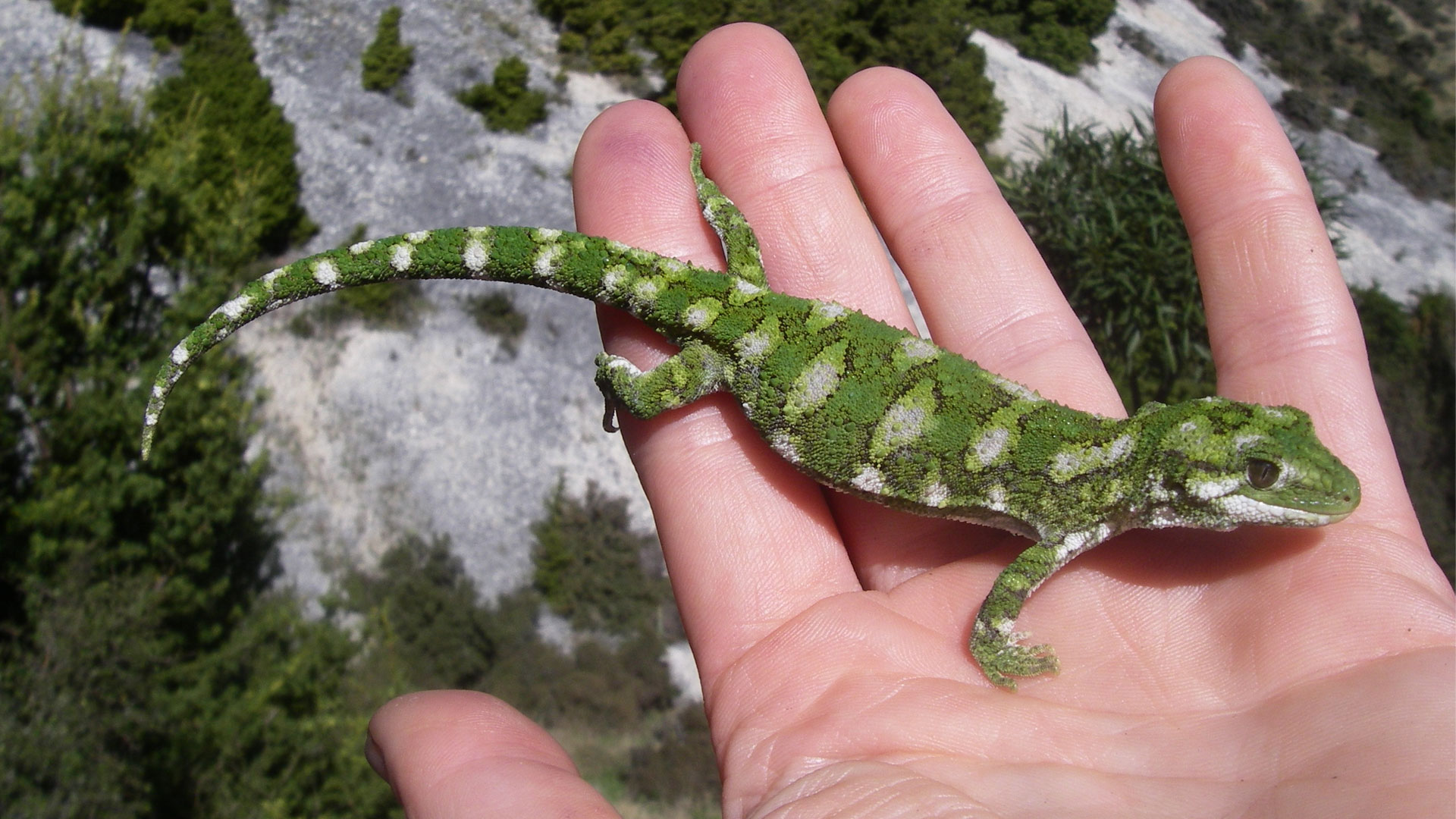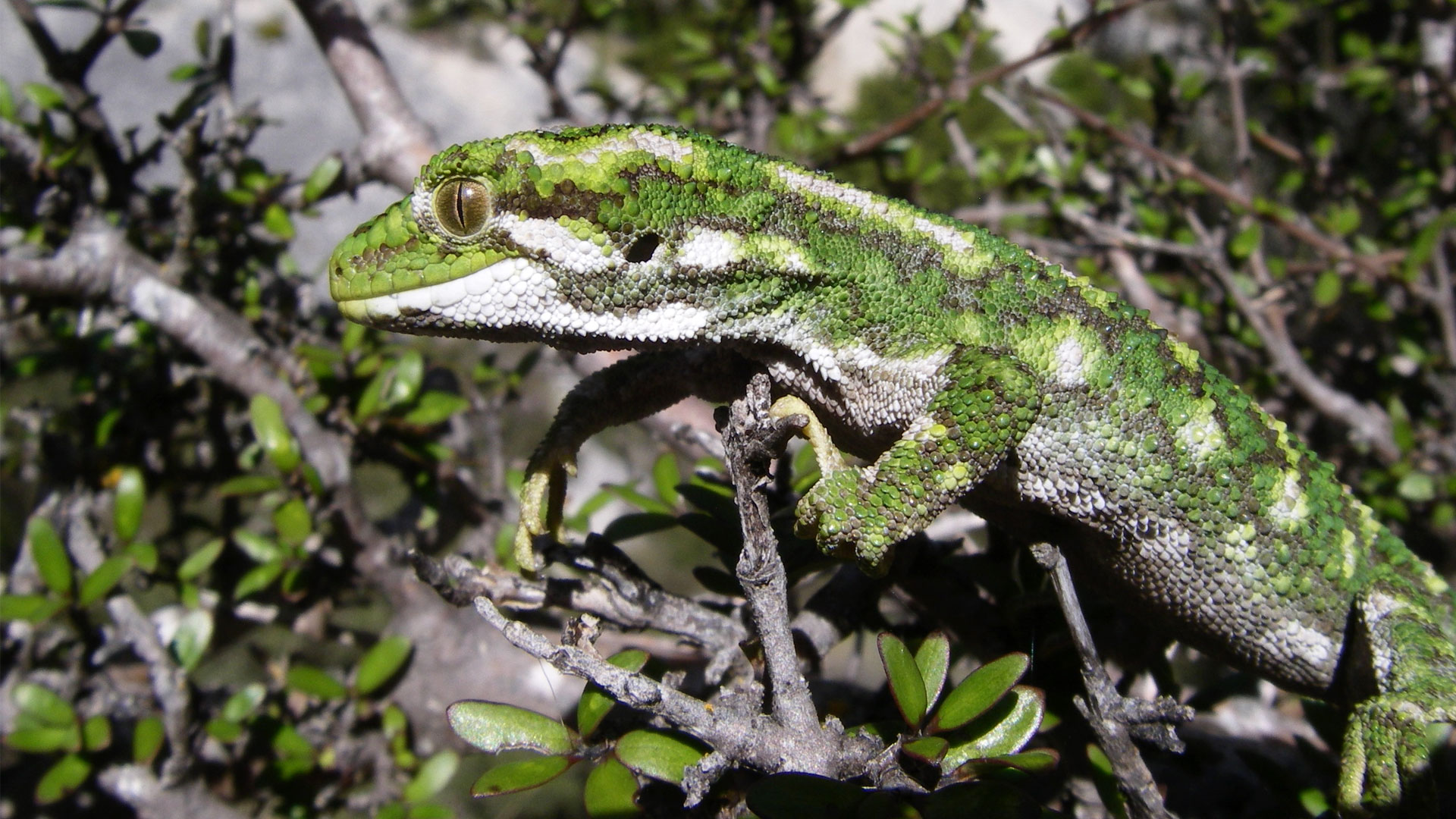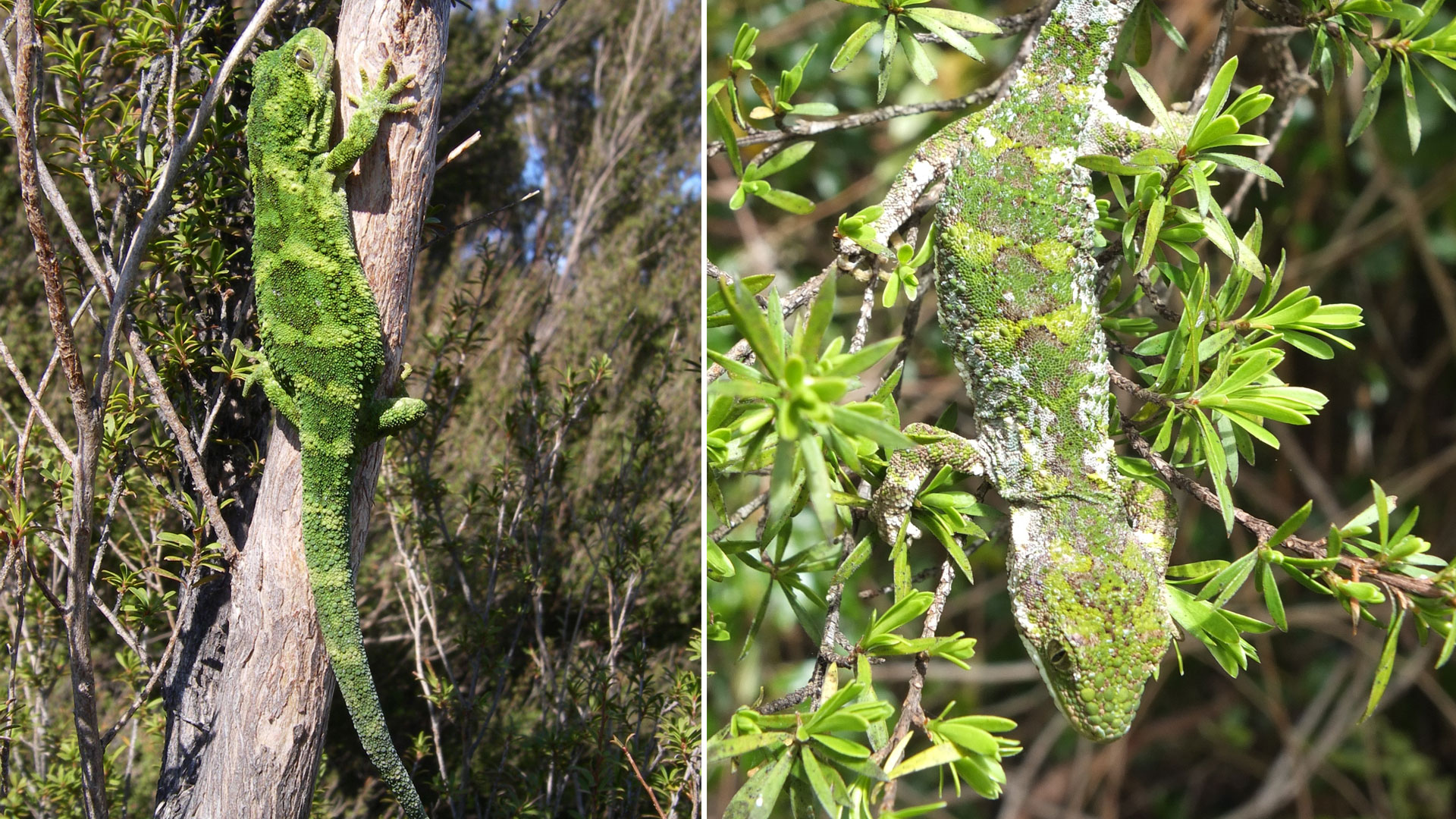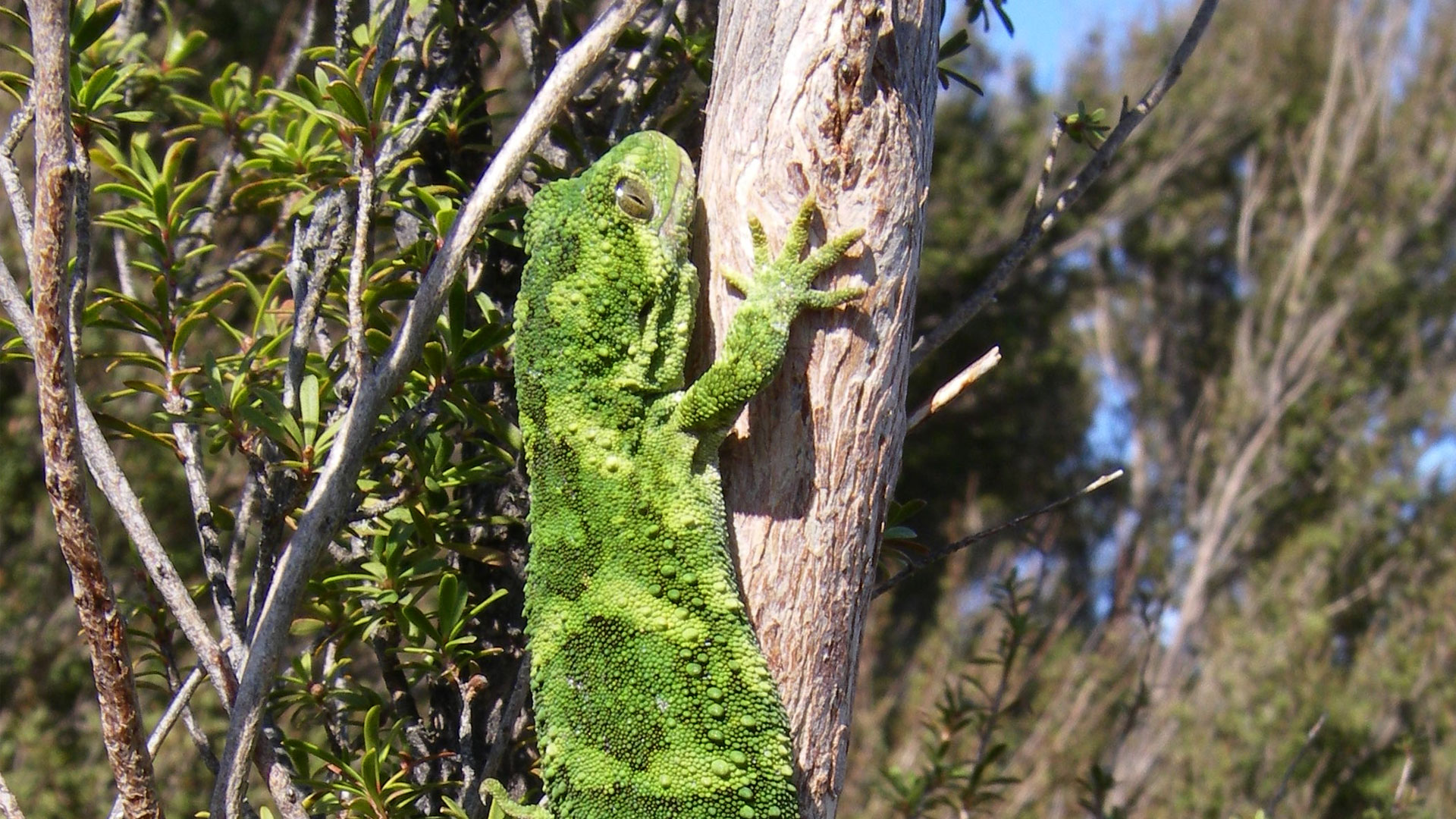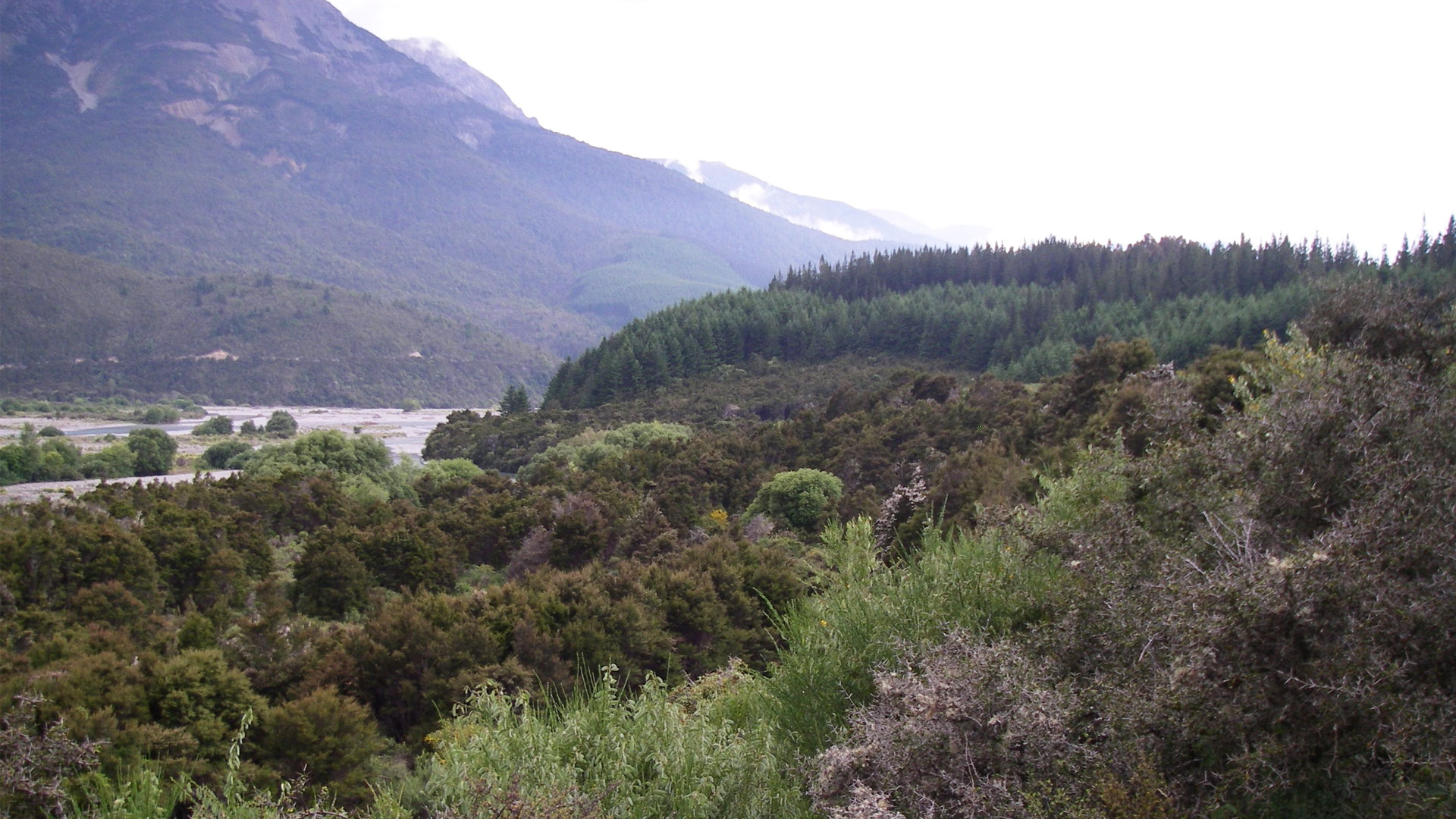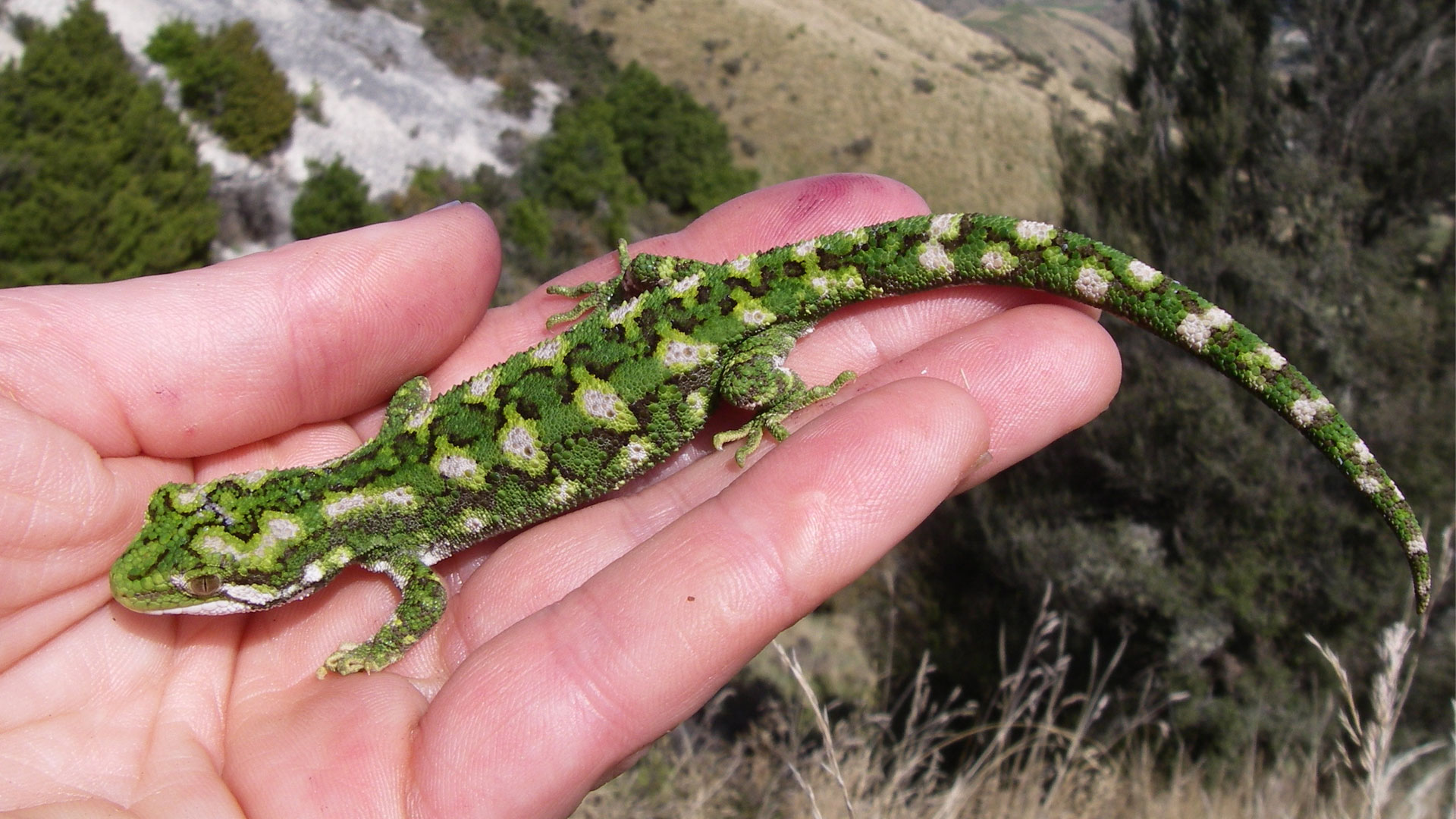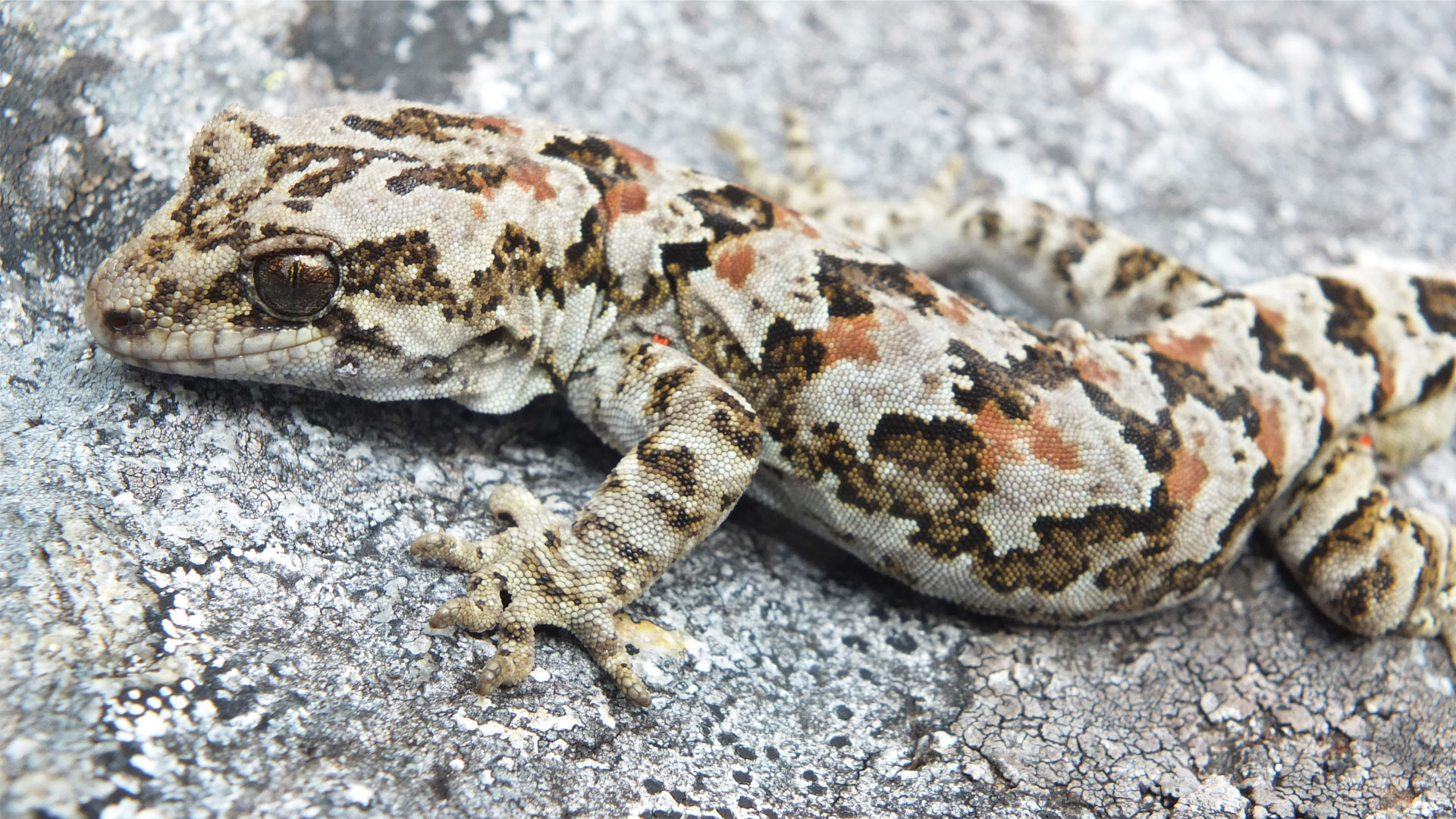Dr Lettink’s work has generated some good news about this enigmatic species. Not only did the survey more than double the number of recorded sightings of rough gecko, but this research has allowed scientists to down-grade the conservation status of this species from Nationally Endangered to Nationally Vulnerable. “It’s the first step in learning where we should put our conservation efforts,” Dr Lettink says, “and empowering the Department of Conservation (DOC) and local councils to protect these newly confirmed gecko hotspots”.
However, our information on this rare gecko is far from complete. Despite the rough gecko’s distinctive pebbled skin and daytime activity, we still know hardly anything about the species behaviour, and more sightings of this rare native are incredibly valuable. So the call is going out – if you are out in the bush between Blenheim and Christchurch, and snap a picture of what could be a rough gecko, please send it in to your local DOC office or to Dr Lettink at marieke@faunafinders.co.nz. Become one of the select group of people who have ever seen a rough gecko, and act as a citizen scientist, helping the emerging research into this species.
If you’d like to get up close and personal to a native gecko without playing hide and seek, Auckland Zoo has several species including rough geckos, living in luxury in Te Wao Nui our home for Aotearoa’s native wildlife.


